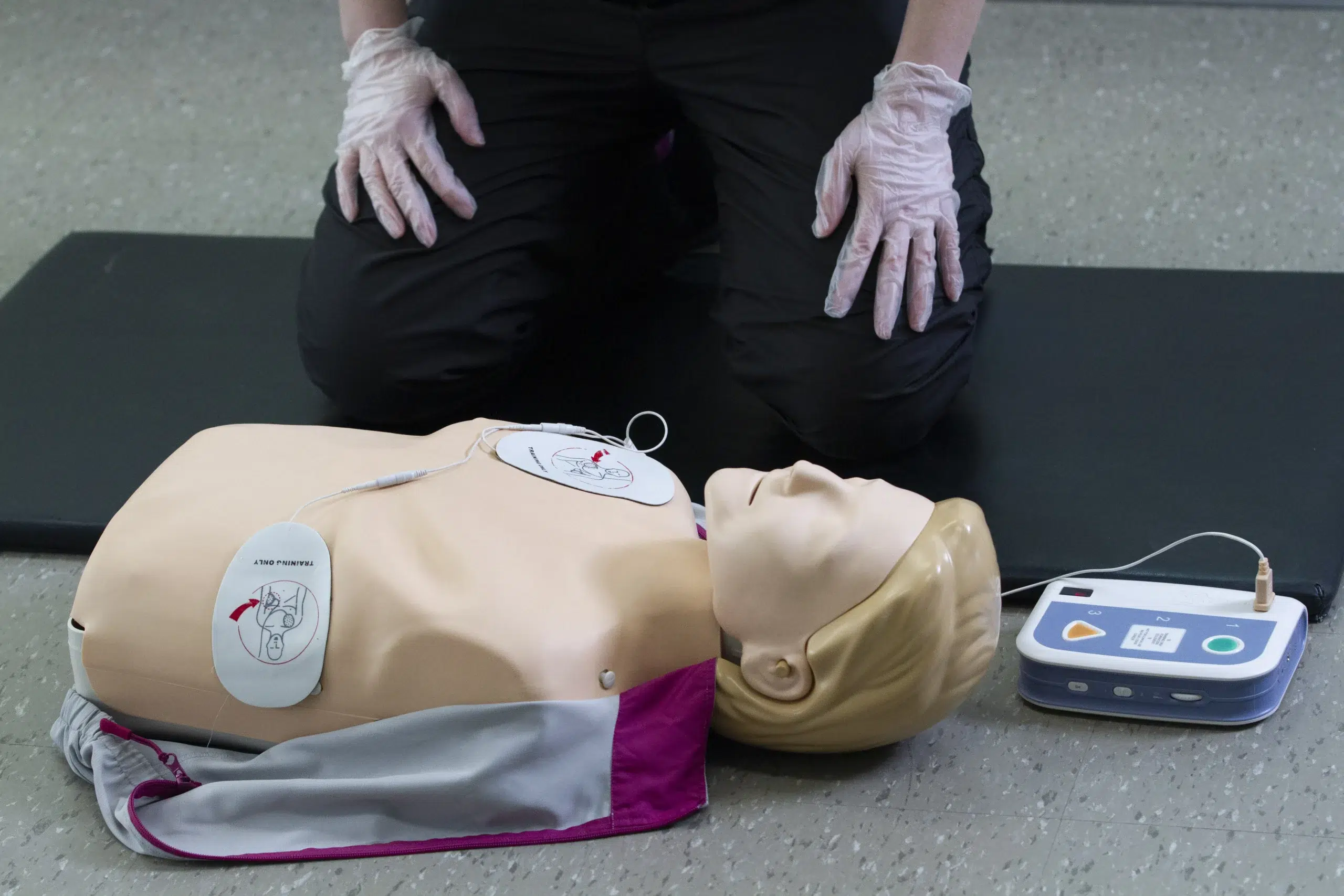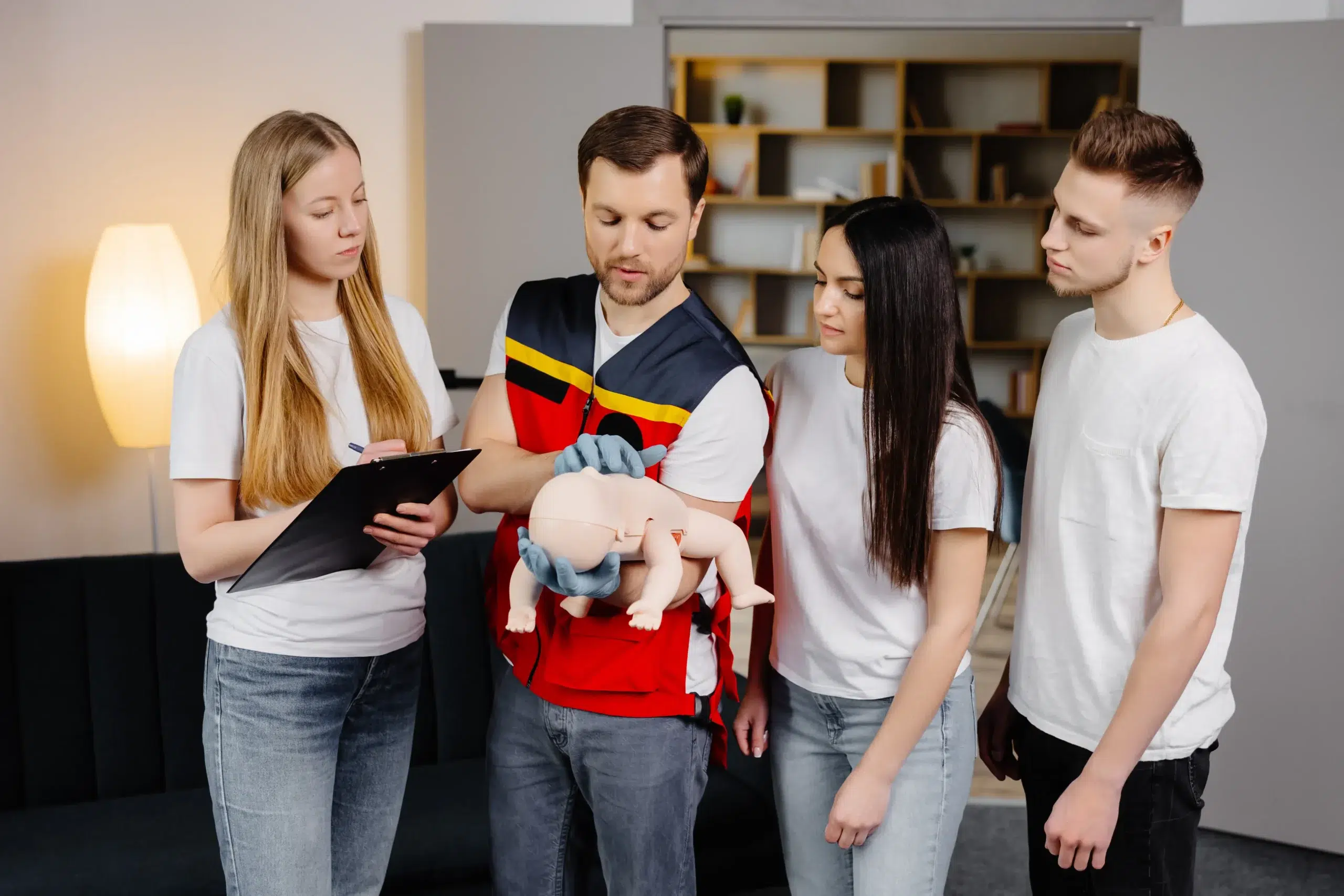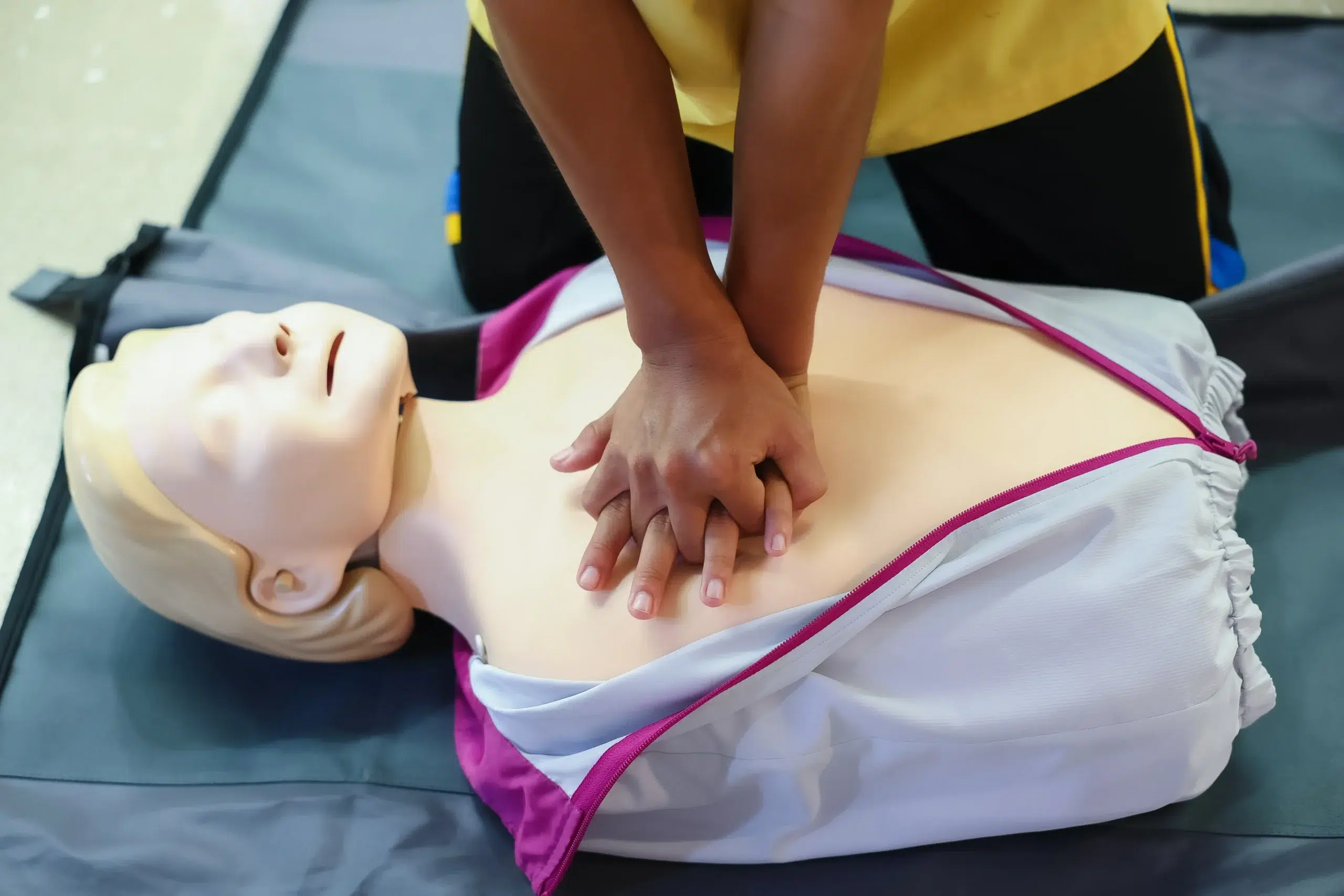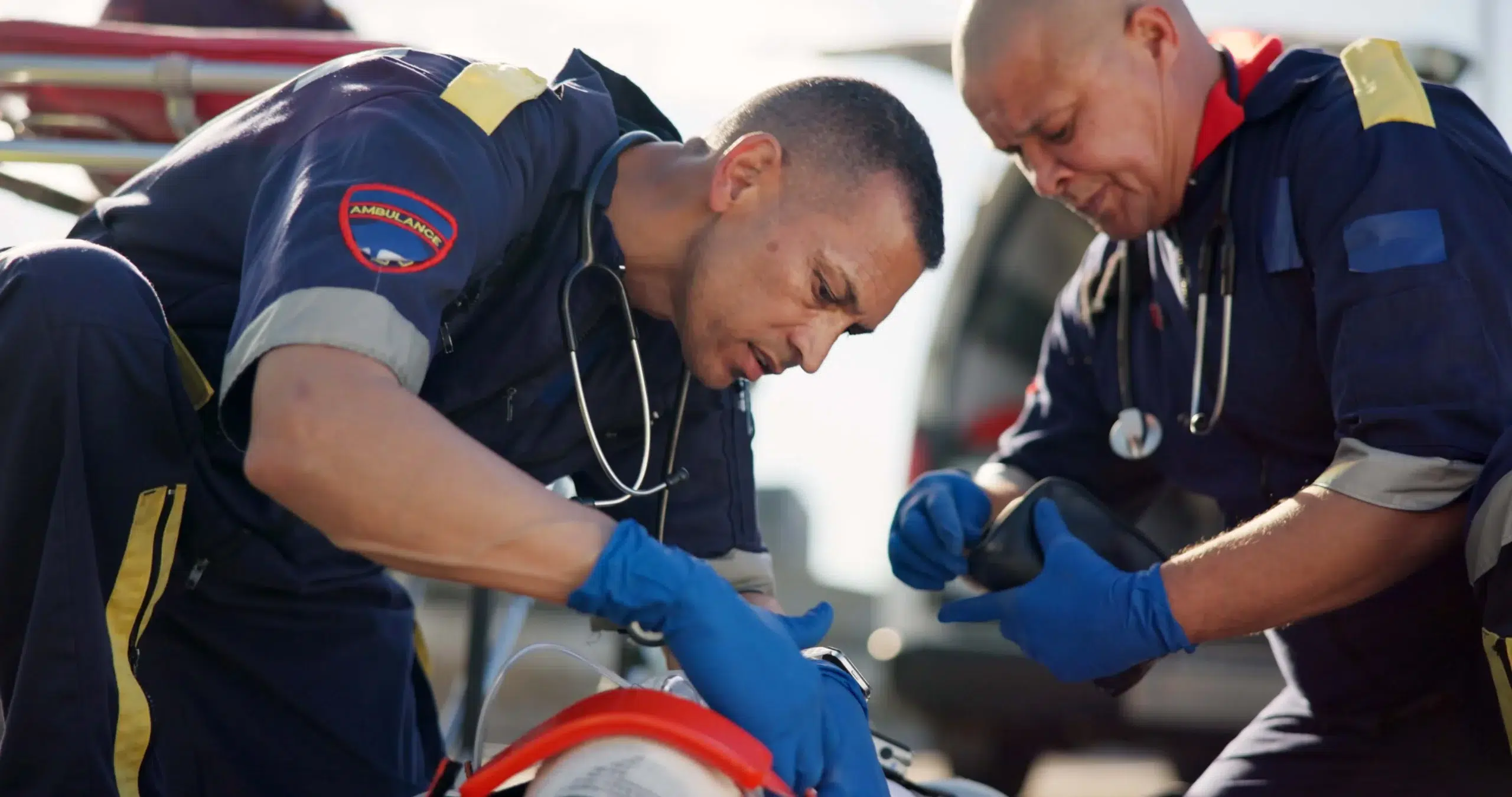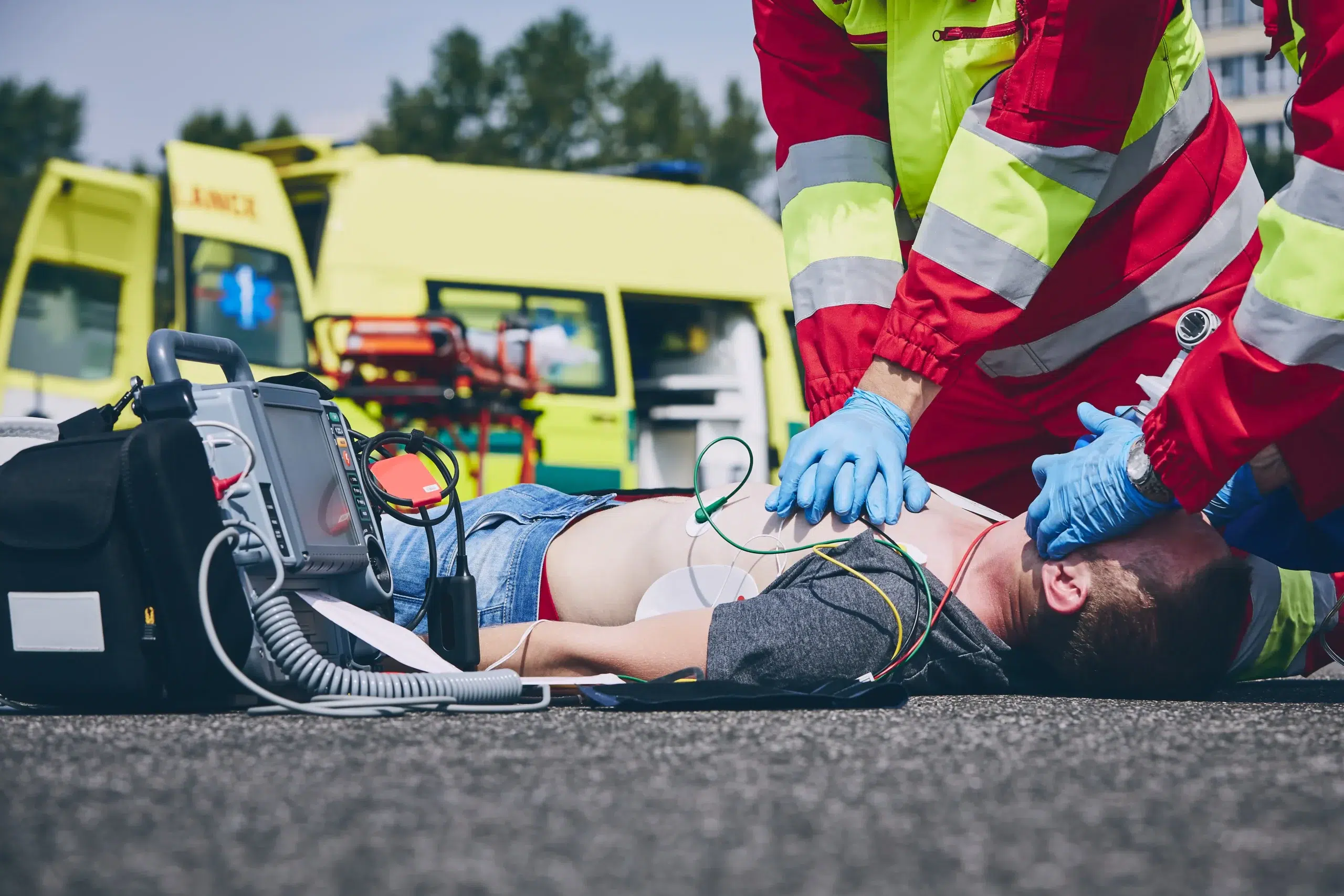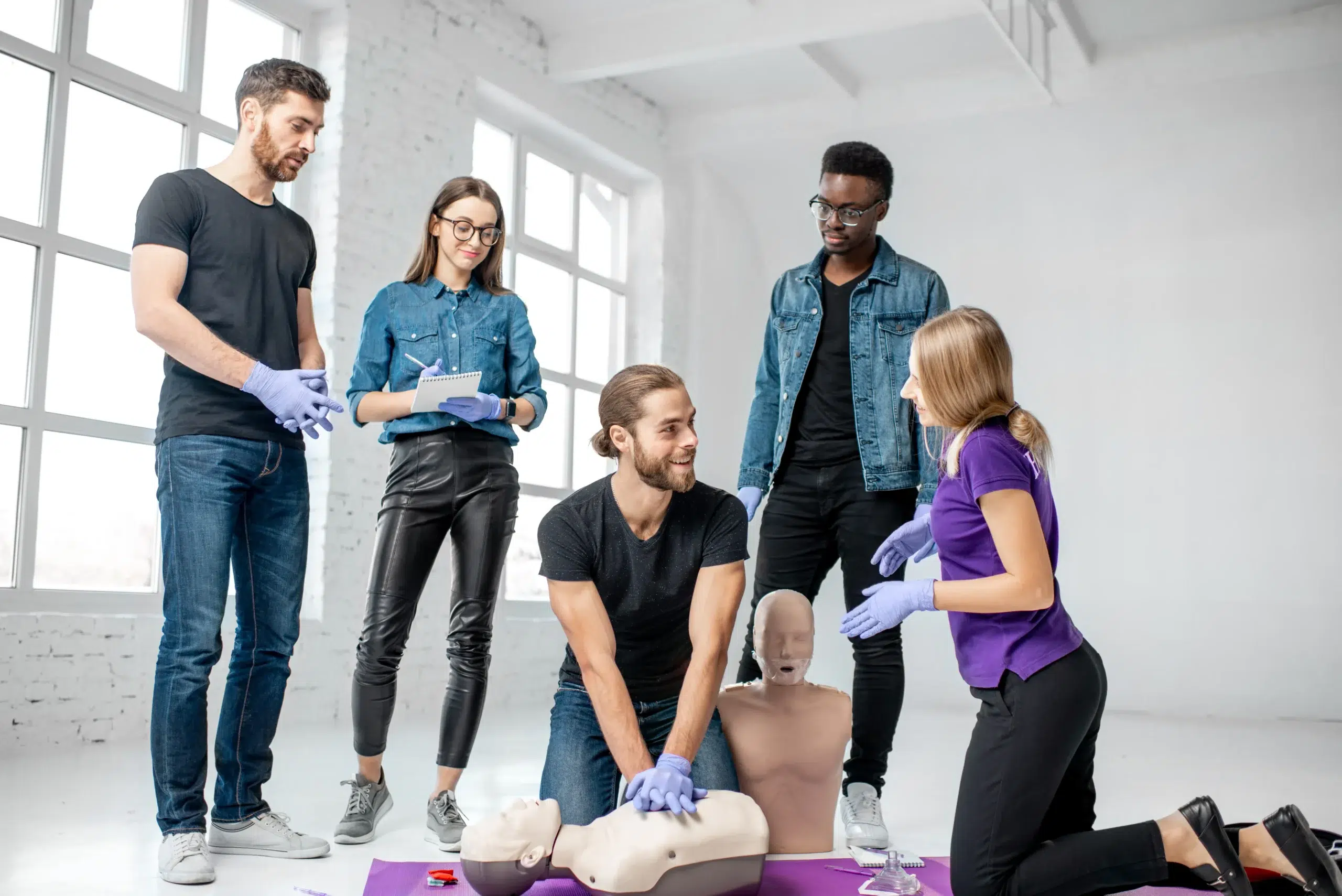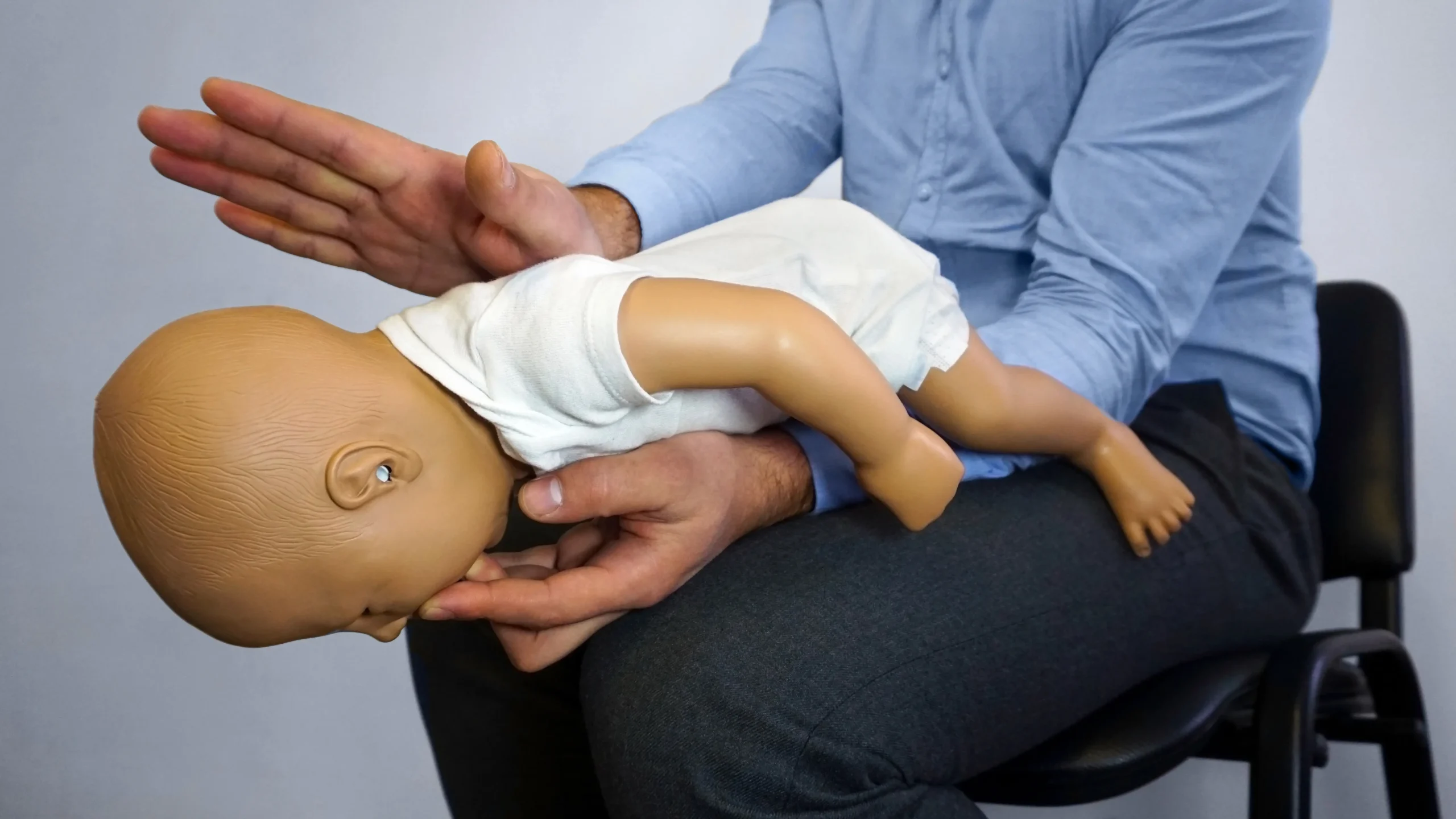In a medical emergency, knowing what to do can mean the difference between life and death. Basic Life Support (BLS) training equips you with the skills to respond effectively in those critical moments. This comprehensive guide covers everything you need to know about BLS, from essential skills like CPR and AED use to finding the right training program for you. We’ll explore the benefits of BLS certification, who should consider getting certified, and how to find bls training near me. We’ll also delve into what to expect during a BLS course, the certification process, and how to stay up-to-date with your skills. Whether you’re a healthcare provider or simply want to be prepared for any situation, this post will give you the knowledge and resources you need to get started.
Key Takeaways
- BLS training provides essential skills for everyone: From healthcare professionals to everyday people, BLS equips you to respond effectively to medical emergencies like cardiac arrest and choking.
- Find a reputable BLS course: Look for AHA-accredited training centers with qualified instructors, hands-on practice, and convenient locations. Consider group discounts and flexible schedules.
- Stay prepared for emergencies: Maintain your BLS certification by taking renewal courses and practicing regularly. Keep your skills sharp so you can confidently provide assistance when it matters most.
What is BLS Training & Why is it Important?
Basic Life Support (BLS) training teaches you how to respond to life-threatening emergencies, especially cardiac arrest and respiratory failure. It goes beyond standard CPR, giving you a broader skill set and more in-depth training. BLS equips you to handle serious medical situations, giving you the confidence to act quickly and effectively. This training is crucial because it empowers people to provide immediate care until professional medical help arrives. Those first few minutes can significantly impact a person’s chances of survival and recovery. The American Heart Association provides further information on their BLS training page.
Key BLS Skills
BLS training gives you essential, life-saving skills. You’ll learn CPR, how to use an AED, and how to help someone who is choking. Beyond these core skills, BLS training covers other important aspects of emergency response, such as recognizing the signs of a heart attack or stroke and understanding scene safety. These skills combined give you the confidence to assist in various medical emergencies. Our BLS courses in Newark cover all these essential skills and more.
Who Needs BLS Certification?
BLS certification is essential for healthcare providers and first responders, but it’s valuable for anyone who wants to be prepared for emergencies. Teachers, coaches, lifeguards, and even parents can benefit from BLS training. Anyone who might encounter a medical emergency in their professional or personal life should consider getting BLS certified. It’s a way to protect your loved ones and contribute to a safer community. Safety Training Seminars offers a variety of courses, including CPR and First Aid certification, to meet diverse needs. We also offer discounted group classes for businesses and organizations.
Find BLS Training Near You
Finding the right BLS training program is easier than you think. Several respected organizations and institutions offer courses, so you can find one that fits your schedule, learning style, and budget.
Top BLS Training Providers
A good starting point is to check with nationally recognized organizations:
- Safety Training Seminars: We offer AHA-certified BLS courses in Newark, conveniently located for students in Fremont and San Jose. Our courses are designed to give you the skills and confidence to respond effectively in emergencies. We also offer CPR and First Aid certification.
- American Heart Association: The AHA provides a comprehensive range of BLS training options, including blended learning (online coursework combined with in-person skills sessions) and traditional classroom courses.
- American Red Cross: The Red Cross also offers BLS certification courses, often available at various locations within your community.
- Local Hospitals & Medical Centers: Many hospitals and medical centers offer BLS training to their staff and often open these courses to the public. Check with hospitals in your area for course availability and schedules.
- National Safety Council: The NSC provides a variety of safety training programs, including BLS certification.
Course Formats & Duration
BLS courses typically involve a combination of online learning and hands-on practice. The online portion covers essential concepts and procedures, while the in-person skills session allows you to demonstrate your skills under the guidance of a certified instructor. Blended learning courses offer flexibility, allowing you to complete the online portion at your own pace. Traditional classroom courses provide a more structured learning environment with direct interaction with the instructor. Most BLS courses can be completed in a single day.
Costs & Discounts
The cost of BLS training varies depending on the provider and course format. Many providers, including Safety Training Seminars, offer discounts for groups and students. Be sure to inquire about potential cost savings when you register. We also have a low price guarantee.
What Happens in a BLS Training Course?
BLS certification goes beyond basic CPR. It covers a broader range of skills and provides more in-depth training to handle various emergency situations. You’ll learn CPR, how to use an AED, and how to help someone who is choking, giving you the confidence to assist in medical emergencies.
Course Content & Hands-On Practice
BLS courses blend lectures and videos with hands-on practice. You’ll work with training manikins to simulate real-life scenarios, like a heart attack or a choking incident. Expect to learn the latest techniques for single-rescuer and team-based CPR for adults, children, and infants. The course also covers ventilation techniques, how to relieve choking, and the proper use of an automated external defibrillator (AED). Safety Training Seminars offers hands-on training in all of its courses.
Real-Time Feedback & Skill Improvement
Many BLS courses now incorporate real-time feedback devices. These tools monitor your chest compressions and rescue breaths, providing immediate feedback on your technique. This helps you correct mistakes and improve your skills during the training. Studies show that this type of objective feedback significantly improves performance both immediately after training and weeks later. This focus on real-time feedback helps participants develop the muscle memory and precision needed to perform BLS effectively in a real emergency.
Certification Process & Validity
After you successfully complete the course requirements, including written and practical exams, you’ll receive a BLS Provider Course Completion Card. This certification is typically valid for two years. The American Heart Association’s RQI program offers a modern approach to maintaining your BLS certification with hands-on practice and real-time feedback. This ensures your skills stay sharp and current. Check out Safety Training Seminars’ BLS courses in Newark to find a class that fits your schedule.
Choose the Right BLS Training Program
So you’re ready to sign up for BLS training? Great! Choosing the right program is a crucial step. It’s about more than just getting certified—it’s about gaining the confidence and skills to potentially save a life. Here’s what to look for:
Factors to Consider When Choosing a Provider
First, think about the quality of the course materials. Thorough, up-to-date resources are key for truly understanding the material and remembering it when it matters most. High-quality resources make a real difference in how well you learn and retain these essential BLS skills. Beyond the books and manuals, consider the program’s overall approach. Does it offer a blend of learning styles? A good mix of interactive elements, videos, and hands-on practice can make a big difference in how well you absorb the information. Also, think about the class size. Smaller classes often allow for more personalized attention from the instructor, which can be invaluable.
Accreditation & Instructor Qualifications
Look for programs accredited by reputable organizations like the American Heart Association (AHA). The AHA’s BLS Course is the gold standard for healthcare providers, and their certification is widely recognized. Make sure the instructors are not only certified but also experienced. A seasoned instructor can offer practical insights and answer your questions effectively. Check if the program aligns with the latest AHA guidelines. Emergency cardiovascular care evolves, so it’s important your training reflects current best practices.
Student Reviews & Testimonials
Before committing to a program, see what other students have to say. Online reviews, like those found on Yelp, can offer a glimpse into the learning experience. Look for comments about the instructors, the course materials, and the overall atmosphere. Positive feedback about hands-on training and instructor feedback is a good sign. Real-world experiences shared by past students can give you a sense of the program’s strengths and weaknesses. This can be especially helpful when comparing different providers in your area. For example, Safety Training Seminars in Santa Cruz has been highlighted for its hands-on training and direct instructor feedback, crucial elements for developing the skills needed for BLS certification.
Get the Most Out of Your BLS Training
Getting your BLS certification is a rewarding experience, especially knowing you’re prepared to help in a medical emergency. Here’s how to make the most of your training, from pre-course prep to renewal:
Prepare for Your Course
Before your BLS class, familiarize yourself with the curriculum. A comprehensive program will cover everything from CPR and AED use to first aid, critical thinking, teamwork, and even legal considerations. Knowing what to expect can help you feel more confident going in. BLS certification courses cater to all levels, from beginners to experienced healthcare providers needing recertification. Choose the course that best suits your current skills and experience. At Safety Training Seminars, we offer a variety of BLS courses in Newark, CA to meet your needs. Check our website for upcoming classes.
Tips for Success
BLS training emphasizes the practical skills you’ll need in real-world emergencies. Actively participate in hands-on practice sessions—this is key to building your confidence and proficiency. Consider supplementing your BLS training with a CPR class to further refine these life-saving skills. The more you practice, the more prepared you’ll be to respond effectively under pressure. Don’t be afraid to ask your instructor questions—they are there to support you. We encourage you to take advantage of our low price guarantee and extended customer service hours.
Renewal Process & Continuing Education
Your BLS certification is typically valid for two years. Keep track of your expiration date and plan to take a renewal course within 30 days of it expiring. Many BLS courses also offer continuing education credits, which can be valuable for maintaining professional licenses or certifications. Staying current with your BLS training ensures you’re always ready to provide the best possible care. Consider joining one of our discounted group classes for a cost-effective way to stay up-to-date.
Related Articles
- BLS for Healthcare Providers in Newark: A Practical Guide – Newark CPR Classes
- HeartCode BLS Fremont: Your Certification Guide – Newark CPR Classes
- BLS Certification in San Jose: Your 2024 Guide – Newark CPR Classes
- BLS Courses in Newark: Your Complete Guide – Newark CPR Classes
Frequently Asked Questions
What’s the difference between CPR and BLS? CPR is a core component of BLS, but BLS training covers a wider range of skills, including using an AED, recognizing the signs of a heart attack or stroke, and understanding team dynamics during a medical emergency. BLS provides a more comprehensive approach to emergency care.
How long does BLS certification last, and how do I renew it? BLS certification is typically valid for two years. You’ll need to take a recertification course before your current certification expires to stay current with the latest guidelines and maintain your skills. Look for renewal courses offered by the same organization that provided your initial training or other reputable providers.
What if I’m not a healthcare professional? Is BLS training still relevant for me? Absolutely! While BLS is essential for healthcare providers, it’s valuable for anyone who wants to be prepared for a medical emergency. Teachers, coaches, parents, and anyone who interacts with the public can benefit from BLS training. It empowers you to act quickly and confidently in a crisis.
How can I find a BLS course near me? Several organizations offer BLS courses, including the American Heart Association, the American Red Cross, local hospitals, and training centers like Safety Training Seminars. Check their websites or contact them directly to find a course schedule and location that works for you. You can also search online for “BLS training near me” to find local options.
What should I expect during a BLS course? Expect a combination of classroom instruction, videos, and hands-on practice. You’ll learn the latest techniques for CPR, AED use, and other essential skills. You’ll also practice these skills on manikins, simulating real-life scenarios. Most BLS courses can be completed in a single day.
